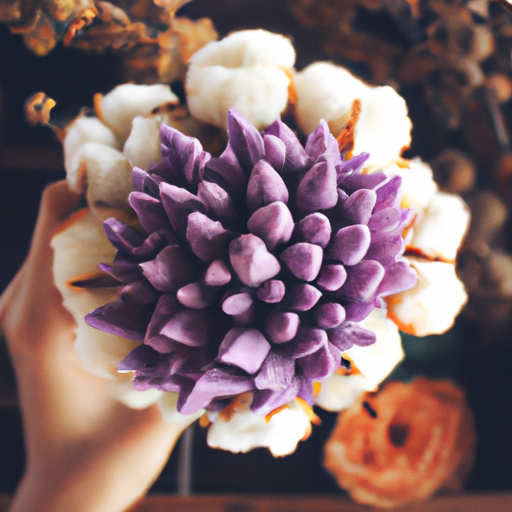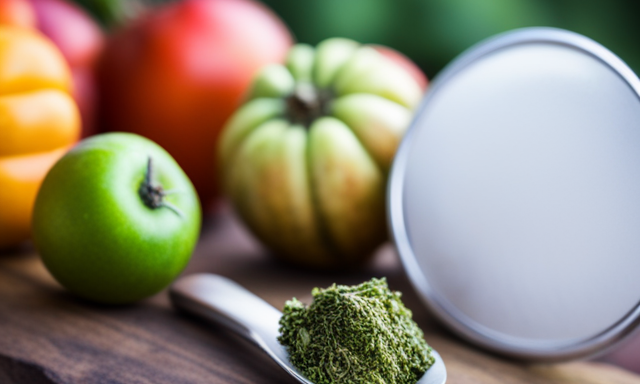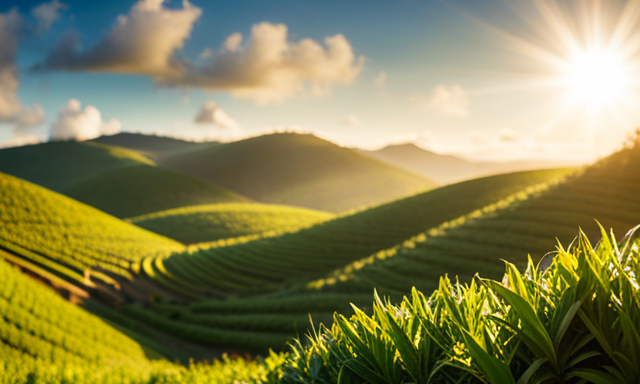As someone who proudly identifies as a ‘yerba mate addict’, I frequently catch myself mulling over a particular question: who truly possesses yerba mate? Does ownership belong to the indigenous groups who have been growing and enjoying it for generations, or to the contemporary businesses that have turned this cherished beverage into a global commodity? Like many aspects of life, the response is complex and not straightforward.
While yerba mate’s origins can be traced back to the Guarani people of South America, its production and exportation has become a major industry in countries like Argentina, Brazil, and Paraguay. Today, multinational companies like Coca-Cola and PepsiCo have even entered the market with their own yerba mate products.
But despite this commercialization, many argue that yerba mate’s true value lies in its cultural significance and potential health benefits.
So who really owns yerba mate? It seems like everyone wants a piece of the pie.
Key Takeaways
- Ownership disputes over certain strains, names, and symbols associated with yerba mate exist.
- Multinational companies like Coca-Cola and PepsiCo have entered the yerba mate market.
- Yerba mate production and exportation is a major industry in Argentina, Brazil, and Paraguay, providing jobs and generating revenue.
- Fair trade practices have been implemented to ensure farmer compensation and environmental sustainability in the yerba mate industry.
Origins and History of Yerba Mate
Let’s dive into the fascinating history of yerba mate and how it’s been enjoyed for centuries.
Yerba mate originated in South America, specifically in the Paraná region between Argentina, Paraguay, and Brazil. The indigenous Guaranà people have been consuming yerba mate for centuries, believing it to be a sacred plant that brings strength and clarity to the mind. They passed down their traditions of drinking yerba mate from generation to generation.
The cultural significance of yerba mate is deeply ingrained in South American culture. It’s often shared among friends and family as a symbol of friendship, hospitality, and community. In fact, sharing a gourd filled with yerba mate is an important ritual in many social gatherings in countries like Argentina and Uruguay.
The drink also plays an important role in traditional ceremonies such as weddings and baptisms. Yerba mate production has expanded beyond its origins in South America and is now exported all over the world. However, despite its global popularity today, it remains a significant part of South American culture.
With its rich history rooted in indigenous traditions and cultural significance still prevalent today, yerba mate continues to be a beloved beverage for millions around the world.
Production and Exportation of Yerba Mate
Despite its centuries-old tradition, yerba mate is gaining popularity overseas with over 290 million kilograms exported in 2020 alone, making it a rising star in the global tea market. Yerba mate cultivation techniques have also improved over the years, leading to higher yields and better quality products. In addition, the use of technology has helped streamline production processes, allowing for more efficient harvesting and processing.
The yerba mate market has seen some interesting trends recently. While traditionally consumed as a hot beverage in South America, it’s now being marketed as an energy drink or healthy alternative to coffee in other parts of the world. This shift has led to an increase in demand for yerba mate-based products such as energy bars and supplements.
As more people become aware of its health benefits and unique flavor profile, it’s likely that we’ll continue to see growth in this market. As we explore who owns yerba mate, it’s important to keep in mind how much the industry has changed over time. From its origins as a sacred drink among indigenous peoples to its current status as a globally traded commodity, there are many stakeholders involved in the production and distribution of yerba mate today.
Ownership of Yerba Mate
You may be surprised to learn about the various stakeholders involved in the production and distribution of yerba mate. It’s not just a matter of farmers growing the plants and companies packaging them for sale.
There are ownership disputes that complicate matters, with different groups claiming rights to certain strains of yerba mate or arguing over who has the right to use traditional names and symbols associated with it.
One example is the ongoing dispute between Argentina and Brazil over which country can claim ownership of ‘yerba mate.’ Although both nations have been producing and exporting this beverage for centuries, each side argues that their version is superior or more authentic. This debate reflects larger tensions around cultural appropriation, as many indigenous communities in South America have long used yerba mate as part of their daily rituals but rarely receive recognition or compensation for its commercial success.
These controversies highlight the complex social and economic impact of yerba mate. As consumers around the world continue to embrace this drink for its unique flavor and health benefits, it’s important to recognize how its popularity affects those who have been cultivating it for generations.
In the next section, we’ll explore some of these issues in greater detail.
Social and Economic Impact of Yerba Mate
Have you ever considered the impact that your daily cup of yerba mate has on the social and economic well-being of communities in South America? Yerba mate is more than just a popular drink; it is an important source of income for farmers and producers in countries like Argentina, Brazil, and Paraguay. The industry also plays a significant role in supporting local economies by providing jobs and generating revenue.
However, the production of yerba mate can have negative environmental impacts if not done sustainably. Deforestation, soil degradation, and water pollution are some of the issues that can arise from intensive agriculture practices. To address these concerns, many companies have adopted fair trade practices to ensure that farmers receive fair compensation for their work while also promoting environmental sustainability.
One way fair trade practices are implemented is through certification programs that require producers to meet certain standards for sustainable farming practices and social responsibility. For example, the Fairtrade International certification ensures that workers receive fair wages and working conditions while also promoting organic farming methods. By choosing products with these certifications, consumers can support environmentally sustainable and socially responsible production methods.
Yerba mate’s impact goes beyond just its economic benefits; it also has potential health benefits due to its high antioxidant content. But before delving into those details, let’s first take a closer look at how yerba mate is produced and processed.
Yerba Mate’s Nutritional Value
Now let me tell ya, yerba mate is packed with nutrition that’ll give you a boost of energy and antioxidants to keep you going throughout the day.
First off, yerba mate has a high amount of vitamins and minerals such as vitamin C, calcium, iron, and magnesium. Additionally, it contains caffeine which helps improve mental clarity and focus while boosting metabolism. Yerba mate also has polyphenols which are powerful antioxidants that help protect against cellular damage caused by free radicals.
Another health benefit of yerba mate is its antioxidant content. Compared to green tea or red wine, studies have shown that yerba mate has a higher concentration of antioxidants. These compounds help reduce inflammation in the body and may even lower the risk of certain diseases such as heart disease or cancer. Some research even suggests that yerba mate can help improve cholesterol levels.
Overall, incorporating yerba mate into your daily routine can provide numerous health benefits due to its rich nutrient profile and high antioxidant content.
Next up we’ll talk about how to prepare and consume this delicious beverage without losing any of its nutritional value. Yerba Mate preparation and consumption is an important aspect when it comes to getting all the health benefits from this drink.
Yerba Mate Preparation and Consumption
To fully reap the health benefits of yerba mate, it’s important to know how to properly prepare and consume this beverage. Yerba mate brewing techniques vary depending on personal preference and cultural tradition.
In South America, where yerba mate is most commonly consumed, a traditional gourd called a ‘mate’is used for preparation. The leaves are placed in the gourd and hot water is added before drinking through a metal straw called a ‘bombilla’. However, other methods such as French press or tea infuser can also be used.
Aside from its unique taste and cultural significance, yerba mate consumption has been linked to numerous health benefits. It contains high levels of antioxidants and vitamins that contribute to overall well-being. Additionally, it has been shown to boost energy levels without causing jitters or crashes like coffee does. Its caffeine content combined with other natural compounds also promotes mental clarity and focus.
In popular culture, yerba mate has gained popularity as a trendy alternative to coffee or tea. Many people enjoy its unique flavor profile while still reaping its health benefits. Whether prepared traditionally or using modern methods, this beverage continues to be embraced by people all over the world for its positive effects on both physical and mental health.
Yerba Mate in Popular Culture
As a trendy alternative to coffee or tea, many people enjoy the unique flavor profile and health benefits of yerba mate in popular culture. It’s not just a drink, but an experience that has made its way into various forms of media.
In movies such as ‘The Motorcycle Diaries’ and the TV show ‘Breaking Bad,’ yerba mate is featured as a cultural symbol of South America. Its popularity has also led to its inclusion in music videos and other forms of entertainment.
Yerba mate has also become a staple in sports culture, particularly in Argentina where it’s consumed before soccer games. The drink provides natural energy and focus, making it appealing for athletes who want to perform at their best without relying on artificial stimulants. Some professional athletes even endorse yerba mate brands as part of their training regimens.
Moving onto the next section about ‘yerba mate tourism,’ it’s important to note that the popularity of yerba mate extends beyond consumption alone. As more people become interested in the drink, they’re also drawn to visit places where it’s grown and produced.
Yerba mate farms offer tours that allow visitors to learn about its history, cultivation process, and taste different varieties. This aspect adds another layer to the cultural significance of yerba mate beyond being just another beverage option.
Yerba Mate Tourism
You might be surprised to learn that many people travel to South America for a unique experience centered around exploring yerba mate farms and learning about the culture surrounding this popular drink. It’s not just about enjoying a cup of tea, but it’s also about understanding the cultural significance of yerba mate in these regions.
As I walked through rows of lush green plants, I couldn’t help but feel a sense of awe at the beauty of the yerba mate farms. The leaves rustled in the gentle breeze as I breathed in the fresh air filled with the scent of yerba mate. The rolling hills and clear blue skies provided a perfect backdrop for my experience.
Learning about the history and tradition behind yerba mate was fascinating. From its origins with indigenous communities to its role in modern society, there is so much to discover. Understanding how it is grown, harvested, and processed was eye-opening and gave me a new appreciation for this beloved drink.
Finally, sipping on a freshly brewed cup while surrounded by nature was an unforgettable experience. It truly felt like I was becoming one with the culture and traditions that have been passed down for generations through this beverage.
As amazing as my experience was, there are certainly challenges and controversies in the yerba mate industry that need to be addressed. Despite this, it’s important to acknowledge how deeply ingrained yerba mate is within certain cultures and continue to appreciate its cultural significance while promoting ethical practices within the industry.
Challenges and Controversies in the Yerba Mate Industry
As I delve into the challenges and controversies surrounding the yerba mate industry, two key points come to mind:
- Labor rights and exploitation, and
- Certification and labeling.
It’s disheartening to learn that many workers in the yerba mate industry are subjected to poor working conditions, low wages, and even child labor. There’s a lack of standardized certification and labeling for yerba mate products, making it difficult for consumers to make informed decisions about what they’re purchasing.
Labor Rights and Exploitation
Hey, did you know that the workers who harvest yerba mate often face low pay and poor working conditions? Labor exploitation is a serious issue in the yerba mate industry, with many workers being paid well below minimum wage and lacking access to basic labor rights. This is especially prevalent in countries like Argentina, where most of the world’s yerba mate is produced.
Ethical sourcing has become an important concern for consumers, who want to ensure that the products they buy are not only high quality but also ethically sourced. While some companies have taken steps to address labor exploitation in their supply chains, there is still much work to be done.
In my next section, I’ll discuss how certification and labeling can help consumers make informed choices about their yerba mate consumption.
Certification and Labeling
Labor exploitation is a prevalent issue in the yerba mate industry, with many workers being subjected to poor working conditions and low wages. However, the certification process and fair trade labeling have been introduced as measures to combat this problem.
The certification process involves an independent third-party organization that evaluates each stage of production, ensuring that social and environmental standards are met. Fair trade labeling is another important aspect of the certification process, which aims to support farmers and workers by improving their livelihoods. This label guarantees that workers receive fair wages for their labor, enabling them to invest in their communities and improve their living standards.
As a conscious consumer, it’s essential to look for products with fair trade labels since it ensures that your purchase directly benefits those who produced it.
As we move towards a sustainable future, it’s vital to create transparency within industries such as yerba mate. The certification process acts as an assurance for consumers that they’re purchasing ethically sourced products while empowering farmers and workers worldwide.
In the next section, we’ll explore how technology is shaping the future of the yerba mate industry.
Future of the Yerba Mate Industry
You’re probably curious about what’s in store for the future of the yerba mate industry, aren’t you? Well, let me tell you that there are some exciting developments on the horizon! One of the most promising areas is sustainability practices. As consumers become more aware of their impact on the environment, companies are looking for ways to produce yerba mate in a way that is environmentally friendly. This includes using renewable energy sources and reducing waste.
Another area that is seeing advancements is technology. Companies are investing in new equipment and processes to improve efficiency and quality control. For example, some companies are using automated systems to sort and process the leaves, which can increase productivity while maintaining consistency in flavor and aroma. Additionally, there are ongoing efforts to develop new drying techniques that preserve more of the natural nutrients found in yerba mate.
Overall, it’s an exciting time for the yerba mate industry as companies work towards sustainable practices and technological advancements. Here’s a table summarizing some key developments:
| Area | Development |
|---|---|
| Sustainability Practices | – Use of renewable energy sources – Reduction of waste – Organic farming methods |
| Technological Advancements | – Automated sorting and processing systems – Improved drying techniques – Quality control measures |
As demand for yerba mate continues to grow around the world, it will be important for companies to prioritize these areas to ensure a sustainable future for both their businesses and the environment. By incorporating sustainable practices and embracing technological advancements, they can continue to provide high-quality products while minimizing their impact on the planet.
Frequently Asked Questions
How does yerba mate consumption affect sleep patterns?
Drinking Yerba Mate can have a significant impact on your sleep patterns. As someone who’s tried it, I’ve found that drinking it too close to bedtime can make it harder for me to fall asleep. This is likely due to the caffeine content in Yerba Mate, which can be similar to that in coffee. However, everyone’s tolerance for caffeine is different, so some people may not experience this effect at all.
It’s important to pay attention to how your body reacts and adjust your consumption accordingly. While Yerba Mate can provide an energy boost during the day, it’s best to avoid consuming it before bed if you’re sensitive to caffeine and want a good night’s rest.
To use a metaphor, think of Yerba Mate as a powerful sports car – exhilarating when driven responsibly but potentially dangerous if misused.
Are there any known health risks associated with drinking yerba mate?
In my research on yerba mate, I’ve found that there are potential side effects associated with drinking it.
Due to its high caffeine content, consuming too much yerba mate can lead to increased heart rate, anxiety, and insomnia.
Additionally, some studies have linked regular consumption of yerba mate with an increased risk of certain types of cancer. However, it’s important to note that the evidence in this area isn’t conclusive and more research is needed.
Overall, while yerba mate can provide a number of health benefits when consumed in moderation, it’s important to be aware of these potential risks before making it a regular part of your diet.
What are some common misconceptions about yerba mate?
When it comes to yerba mate, there are a few common misconceptions that I’ve come across.
Firstly, many people believe that yerba mate is only consumed in South American countries and has no cultural significance elsewhere. However, this couldn’t be further from the truth as yerba mate has gained popularity in other parts of the world due to its numerous health benefits.
Another misconception is that there’s only one way to prepare yerba mate. In reality, there are various techniques including using a traditional gourd and bombilla or even making it into a tea bag form. It all depends on personal preference.
Overall, it’s important to recognize the cultural significance of yerba mate while also understanding that there are different ways to enjoy it beyond traditional methods.
How does the taste of yerba mate compare to other popular teas and coffees?
When it comes to taste comparison, yerba mate offers a unique flavor profile that sets it apart from other popular teas and coffees.
While coffee is known for its bold and bitter taste, and tea offers a more delicate and floral flavor, yerba mate falls somewhere in between. Its earthy notes are reminiscent of green tea, while also offering a slightly smoky quality that can be compared to the taste of a light roast coffee.
Additionally, the brewing techniques used for yerba mate are quite different from those for traditional teas or coffees. Yerba mate is traditionally brewed with hot (but not boiling) water in a gourd or special cup called a bombilla.
This method allows the drinker to experience the full complexity of flavors inherent in this South American beverage.
Are there any traditional yerba mate ceremonies or rituals that are still practiced today?
There are a number of traditional practices associated with yerba mate that are still practiced today. These rituals have significant cultural significance and vary depending on the region in which they are observed.
In some areas, for example, it’s customary to share the mate gourd among friends or family members as a way of building community and fostering social bonds. Other traditions involve specific preparations of the tea or certain times of day when it should be consumed.
Regardless of the specifics, however, these practices serve as an important reminder of the deep historical roots and cultural importance of yerba mate in many parts of South America.
Conclusion
In conclusion, learning about the origins and history of yerba mate has shed light on the rich cultural significance this beverage holds for many South American communities. As a consumer, it’s important to consider who owns yerba mate and how our purchasing decisions can impact those involved in its production and exportation.
The social and economic benefits that come with the yerba mate industry cannot be ignored, but it’s equally crucial to address challenges such as labor rights and environmental sustainability.
Furthermore, exploring the nutritional value of yerba mate highlights its potential health benefits, making it an attractive alternative to other caffeinated beverages. Its popularity in popular culture and tourism also demonstrate its widespread appeal.
However, controversies surrounding ownership and exploitation must be addressed in order to ensure a sustainable future for the industry.
As we continue to enjoy this beloved beverage, let’s not forget the complex web of individuals involved in bringing it from field to cup. How can we support fair trade practices and environmental responsibility within the yerba mate industry? This rhetorical question serves as a reminder that our choices as consumers have real-world consequences beyond our own personal preferences.










